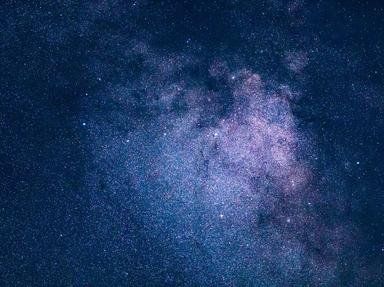Quiz Answer Key and Fun Facts
1. I first became interested in space exploration after reading a book and watching a 1980 TV-series entitled "Cosmos". Who was the author/presenter?
2. To explore the Cosmos, I became a space traveler. For some reason, different countries have given us different names. Which country was the first to use the term "cosmonaut"?
3. Man has sent many different kinds of satellites into orbit since the first one, Sputnik, was launched in 1957. I have to be careful not to hit any of them. They have many purposes such as geological research, intelligence, navigation, and of course distribution of entertainment in the form of satellite TV. Where do they place such communication satellites?
4. My spaceship is fast and the moon soon comes into view. On its surface, I can see the features of its surface much clearer than the ancient astronomers did, including the dark spots the ancients called "Mare". Why did they call them that?
5. I pass the moon quickly and turn my head to watch its far side, the side never visible from earth. The crew members of Apollo 8 were the first humans to see it, and they jokingly(?) reported seeing this fictional character in the neighborhood:
6. Moving outwards in the solar system, the first planet I encounter is Mars, aka The Red Planet. Like all planets except Earth, it is named after an ancient god. What was Mars the god of?
7. Passing the asteroid belt, my trip takes me towards the four giant planets in our solar system. Consisting mostly of gases, their density is lower than that of Earth. One of them would actually float in water, if you could find a big enough bathtub to place it in. Which planet could serve as a rubber ducky to a really, really big child?
8. Onwards and outwards to the stars! The star system closest to earth, our own sun excluded, is Alpha Centauri. During the trip there, I ponder the following question: how long a time would it take to drive there in my car doing 100 km/h (60 mph)?
9. If you thought it was a long drive to the closest star, consider the distance to the galaxy closest to us: 2.5 million light years. Despite this unfathomable distance, it is partly visible to the naked eye. What is it called?
10. At the end of my trip to the Cosmos, I feel that it's a rather long way from home. And for a good reason! I came here to study the brightest things in the universe (members of FunTrivia excluded) and most of them are more than three billion light years away. The emissions scientists can see today left these parts when Earth was still a smoldering heap of lava. What are they called?
Source: Author
akg1486
This quiz was reviewed by FunTrivia editor
Pagiedamon before going online.
Any errors found in FunTrivia content are routinely corrected through our feedback system.


